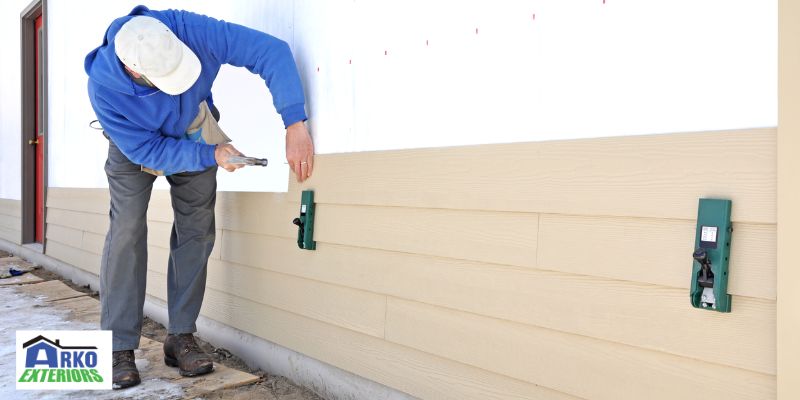Siding is like the face of your home, and just like a good skincare routine can enhance your natural beauty, the right siding can take your home’s curb appeal to the next level!
Siding can come in a variety of materials, colors and styles, which means you have plenty of options to choose from. Whether you opt for classic clapboard or sleek modern panels, the right siding can completely transform the look and feel of your home.
One of the most obvious ways siding can improve your home’s curb appeal is through color. Choosing a bold or unexpected color can make your home stand out in a sea of neutral houses on your street. Or, if you prefer a more traditional look, opting for a subtle color can still make your home look polished and put-together.
Another way siding can enhance your home’s curb appeal is through texture. Different siding materials, such as wood, vinyl or fiber cement, can all provide a unique texture that can add depth and interest to your home’s exterior. From rustic shakes to smooth panels, the texture of your siding can make a big impact on the overall look of your home.
What is the best time to change the siding?

The best time to change the siding of your home depends on a few factors, such as the condition of your current siding, your budget and the weather in your area.
If your siding is damaged, warped or has signs of rot or mold, it’s important to replace it as soon as possible to prevent further damage to your home’s structure. In this case, the best time to change your siding would be as soon as possible, regardless of the season or weather.
However, if your siding is in good condition and you’re looking to upgrade or change the look of your home’s exterior, there are certain times of the year that may be more optimal for siding replacement. Spring and summer are popular times for home improvement projects, including siding replacement, because the weather is usually mild and dry. This can make the installation process easier and faster, and reduce the risk of weather-related delays or complications.
On the other hand, if you’re looking to save money on your siding replacement project, you may want to consider scheduling it for the fall or winter months. During these seasons, contractors may have more availability and be willing to offer discounts or promotions to fill their schedules. However, it’s important to keep in mind that cold or wet weather can make the installation process more difficult, so it’s important to work with a reputable and experienced contractor who can handle these challenges.
Moreover, the best time to change your siding depends on your specific needs and circumstances. If your siding is damaged, it’s important to replace it as soon as possible, regardless of the season. If you’re looking to upgrade or change the look of your home, spring and summer may be the most optimal times, while fall and winter may offer cost-saving opportunities.
How do you know when to change the siding?

There are a few signs that can indicate it’s time to change the siding on your home.
Here are some common things to look for…
Damage: If your siding is cracked, warped or has holes or gaps, it’s likely time for a replacement. Damage to the siding can allow moisture and pests to enter your home, which can cause further damage and potential health risks.
Fading or discoloration: Over time, the color of your siding may fade or become discolored due to exposure to the sun and other weather conditions. If your siding looks dull or stained, it may be time to consider a replacement.
High energy bills: If your energy bills have been increasing, it may be due to poor insulation in your home’s siding. Older or damaged siding may not provide adequate insulation, which can cause your heating and cooling systems to work harder than necessary.
Mold or mildew growth: If you notice mold or mildew growing on your siding, it may be a sign of moisture damage. This can be a health hazard and may indicate that the siding needs to be replaced.
Age: Finally, if your siding is more than 20 years old, it may be time for a replacement. Even if it appears to be in good condition, aging siding can become brittle and less effective at protecting your home from the elements.
If you notice any of these signs, it’s a good idea to contact a professional siding contractor to assess the condition of your siding and recommend the best course of action.
Summary:
In conclusion, knowing when to change the siding on your home is important for maintaining its appearance, energy efficiency and overall integrity. If you notice any of the signs mentioned above, it’s a good idea to consider a siding replacement. Contacting a professional siding contractor can help ensure that the job is done correctly and efficiently. Don’t wait until it’s too late– take action now to protect your home and improve its curb appeal. In Blaine, Minnesota, call Arko Exteriors at 763-434-2756 for more information.

